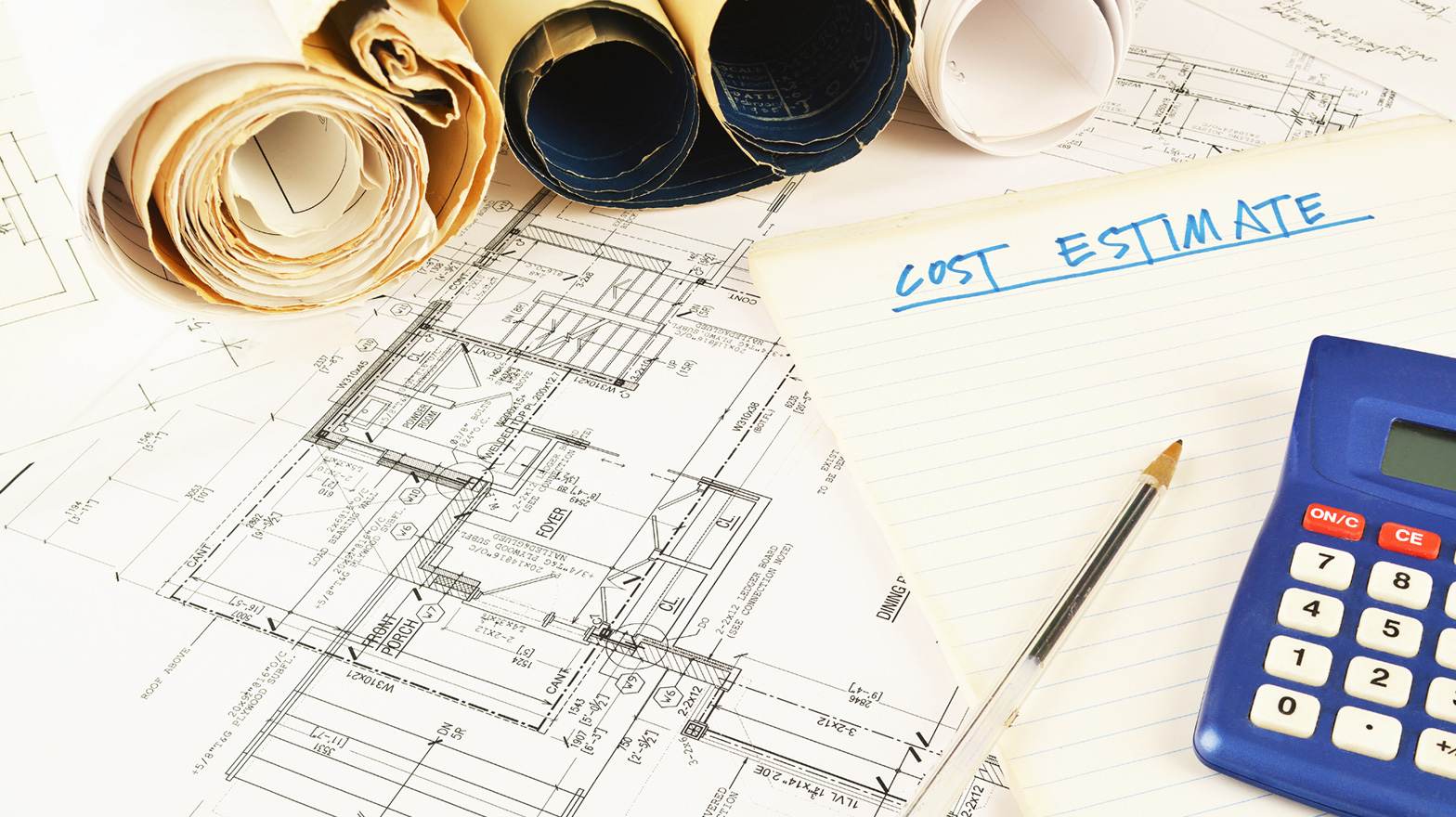Construction Cost Estimation: Process & Tips for Contractors
A construction estimate serves as your project’s detailed financial blueprint. They account for all potential expenses, from direct construction costs like materials, labour, and risk mitigation to indirect costs like equipment maintenance and permitting fees. Understanding how to estimate construction jobs and material costs lets you start the job on the right foot with an accurate estimate. This allows for smooth operations throughout the construction process.
This guide will walk you through professional construction estimators’ steps to determine project costs. With this information, you can confidently navigate the construction cost estimating process.
The Construction Estimating Process
Calculating construction costs follows an eight-step process from project initiation to project proposal. It’s done by construction estimators responsible for understanding the scope of work and determining an accurate estimate.
1. Project Initiation
To start the construction estimating process, construction estimators collaborate with project stakeholders, including owners, architects, and engineers, to clearly define the project’s purpose, functionalities, and desired outcomes.
This initial phase involves collecting essential construction documents like architectural drawings, specifications, and existing site surveys.
2. Feasibility Analysis
Before diving into specifics, construction estimators conduct a thorough feasibility analysis. They evaluate the construction site for potential challenges like soil conditions, access limitations, or zoning restrictions. Additionally, they ensure the project design adheres to relevant Ontario building codes and regulations.
3. Material Takeoff
The foundation for accurate construction cost estimation lies in meticulously quantifying the materials required. Construction estimators perform a Material Takeoff (MTO), also known as a Quantity Takeoff (QTO) where they precisely measure the lumber, concrete, and other materials needed for each construction phase or building component.
4. Acquiring Estimates
Beyond materials, construction estimators acquire estimates for the project’s workforce, supplies, and tools. They also do the following:
- Secure labour costs considering expertise needed per phase,
- Research competitive material pricing using the material takeoff, and
- Assess equipment costs with rentals or purchases estimated based on project scale and existing equipment availability.
This comprehensive approach to labour, materials, and equipment cost estimates paints a clearer financial picture of the construction project.

Image source: Canva
5. Mitigating Risks
Construction is inherently risky. To safeguard the project and its stakeholders, construction estimators factor in the estimated costs of required insurance coverage and any necessary bonds.
- Insurance Coverage: Different types of insurance policies protect against various risks:
- General Liability Insurance
- Workers’ Compensation Insurance
- Builder’s Risk Insurance
- Commercial Auto Insurance
- Bonds: Depending on project requirements and local regulations, certain bonds may be necessary:
- Performance Bond
- Payment Bond
- Bid Bond
When determining how to estimate construction jobs, construction estimators consider project size, complexity, and local regulations to determine the necessary insurance and bonding requirements.
They then consult with insurance professionals and bonding companies to obtain quotes. This ensures proper coverage at a competitive price.
6. Overhead Costs
Construction estimators come up with overhead expenses after securing insurance and bonding to mitigate risks. These indirect costs keep the project running smoothly and include office expenses, salaries for administrative staff, permits and licenses needed for construction, and professional fees paid to architects and engineers involved in planning.
Factoring in these overhead costs ensures a more comprehensive financial picture and prevents underestimating the project’s financial needs.
7. Contingencies
Estimators always include a buffer in their budgets should anything go wrong during construction. This is money reserved to handle surprises like material price hikes, tricky site conditions, or unexpected code changes.
Project complexity, possible site issues, and schedule tightness determine the size of this financial buffer. Adding a contingency reserve allows flexibility so the project can handle unexpected obstacles without exceeding the budget.
8. Project Proposal
Construction estimating leads to a strong proposal, which is a financial roadmap for a project. This proposal, built on meticulous calculations, empowers all stakeholders in the following ways:
- Owners can assess feasibility and secure funding with a clear picture of costs.
- Contractors can develop plans, schedules, and competitive bids.
- Lenders can evaluate the project’s financial health for loans.
Everyone involved in the construction process needs to have a proposal that is clear and includes all the necessary information, such as:
- Costs of materials
- Skilled labour
- Equipment
- Reducing risks
- Overhead costs
- Any surprises that may come up

Image source: Canva
Types of Estimates
A construction estimate can come in different forms. It all depends on the project’s needs.
Preliminary Estimate
Preliminary estimates help determine project feasibility, secure project funding and guide early decision-making. They depend on broad price points, averages from previous projects, and simple square footage calculations.
Detailed Estimate
The detailed estimate is typically based on completed design documents, such as architectural drawings and specifications. They establish a realistic picture of the budget.
Quantity Takeoff Estimate
A quantity takeoff estimate (QTO) is a detailed way to determine how much labour and materials are needed for each part of the building or construction phase. It serves as a valuable reference point throughout the construction process.
Bid Estimate
A bid estimate is unique to the contractor and their pricing strategy. They include the project’s scope, labour and material costs, and desired profit margin. After reviewing the qualifications and experience of each bid, owners can select the most affordable provider.
Control Estimate
The control estimate sets a standard for project costs and helps keep tabs on where things stand with the original budget. A realistic control estimate accounts for things that might go wrong, like building code changes, unplanned site conditions, or material price changes.
Mitigate Construction Risks With Contractors Insurance
Construction projects require careful planning, but unforeseen events can still upend your budget and timeline. That’s why understanding how to estimate construction jobs is crucial to mitigate risks and get the right insurance for your project. Contractors Insurance is just the one to help.
We’re an award-winning commercial insurance brokerage specializing in Ontario’s construction industry. Our dedicated team understands the unique needs and risks contractors, tradespeople, and professionals like you face.
Whether you’re an engineer, renovator, landscaper, plumber, roofer, or any other construction professional, we have the expertise to navigate the complexities of your specific field and provide you with personalized insurance.
Contact Contractors Insurance today and let us help you mitigate risks with a customized insurance plan.
BACK TO ALL ARTICLES





Leave a Reply
Required fields are marked *
Leave a Comment